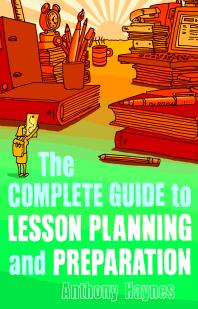
Use the following terms in a subject search to find related items in the library catalogue. A subject search can be performed by typing in the suggested items below and clicking on the blue "subject button".
- Lesson Planning
- Group work in education
- Individualized instruction
- Curriculum planning
- Early childhood education Activity programs
Welcome to the lesson planning guide! Here you will find curriculum resources both in the TRU library and online. Choose your subject on the left or head up to the curriculum collection on the second floor of the Main Library to get started! See the page "Finding Books in the Curriculum Collection" for more information about using this collection.
 The complete guide to lesson planning and preparation
by
Anthony Haynes
The complete guide to lesson planning and preparation
by
Anthony Haynes
 Learning targets : helping students aim for understanding in today's lesson
Learning targets : helping students aim for understanding in today's lesson
 Lesson planning
by
Graham Butt
Lesson planning
by
Graham Butt
 How to reach and teach all children in the inclusive classroom : practical strategies, lessons, and activities
by
Sandra F. Rief, Julie A. Heimburge
How to reach and teach all children in the inclusive classroom : practical strategies, lessons, and activities
by
Sandra F. Rief, Julie A. Heimburge
 Online collaborative learning communities : twenty-one designs to building an online collaborative learning community
by
Chih-Hsiung Tu
Online collaborative learning communities : twenty-one designs to building an online collaborative learning community
by
Chih-Hsiung Tu
 Power of Ten [kit]
by
Calkins, Trevor
Power of Ten [kit]
by
Calkins, Trevor